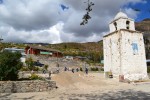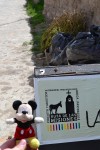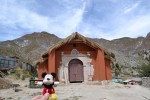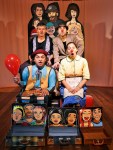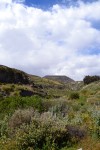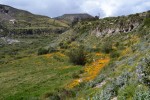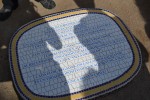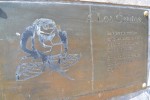While in the northern Chilean campo for a days in April, my groups was broken up and we stayed with Aymara families in various villages in the Chilean altiplano. The Aymara are the 2nd largest indigenous group in Chile and are concentrated in Southern Peru/Bolivia/Northern Chile. Their religious faith is based on complementary; male and female, light and darkness, earth and sky. To them, the earth is alive. The land is called the Pachamama, the sun is called Inti. The mountains, the wind, the rain are all alive. Before major events, the Aymara conduct a pawa. A blanket is placed on the ground, and coca leaves are placed on top of the blanket. A man and women each take a small cup of wine and pure alcohol (gives from the earth and sky, respectively) and pour a small amount on the ground at each corner of the blanket, asking Pachamama, Inti, and the other divine forces for blessings. They then throw the remaining liquid off into the distance.
I, along with 3 other students, stayed in Belén, a village that, when I asked 3 different people how many people lived there, got 3 different answers of 40, 80, and 300. Since 80 is the middle number, I’ll settle on that. The town maybe 1 square mile big. Most of the people who live there have farm land where they grow corn, lima beans, oregano, and potatoes. I stayed with the Zegarra family. Angelina owns goats and makes goat cheese. Edie is the town handyman and also runs the towns Registro Civil (civil registration service, like a DMV). The son Edie is one of 7 kids that go to the local school.
What did we do in Belén? One night there was a celebration at the school for Día de Los Carabineros, the national police force. The kids did a dance for 2 visiting police officers and then there was a community dinner. We went to some meetings of the town regarding water access for the town, as well as a tour of the campo by Juan, one of the neighbors. We helped pick some vegetables in the campo with Angelina, and I helped repair a roof with several of the local community men (well, not really help, but try to do whatever they told me to do. I think they could tell by looking at me I’m not good with hammers or Spanish).
Belén was a great experience. But it also highlighted some of the problems the campo is facing. There are no young people. Most of them leave for Arica or other big cities for jobs and college, and then never come back. There is an effort by the Foundación Altiplano to restore some of the churches in the region to help preserve the history of the area and bring some tourists to the area. After seeing the work they did on a church in Belén, I decided to do my independent study project on this effort (more info in another post). Also, water is an issue for the Aymara of the altiplano. They consider water to be theirs, but there is conflict with the Chilean government dating back many years about access to water.
Here are some pics from Belén. Mickey enjoyed it a lot. All 4 of us did! ¡Vive Belén!

